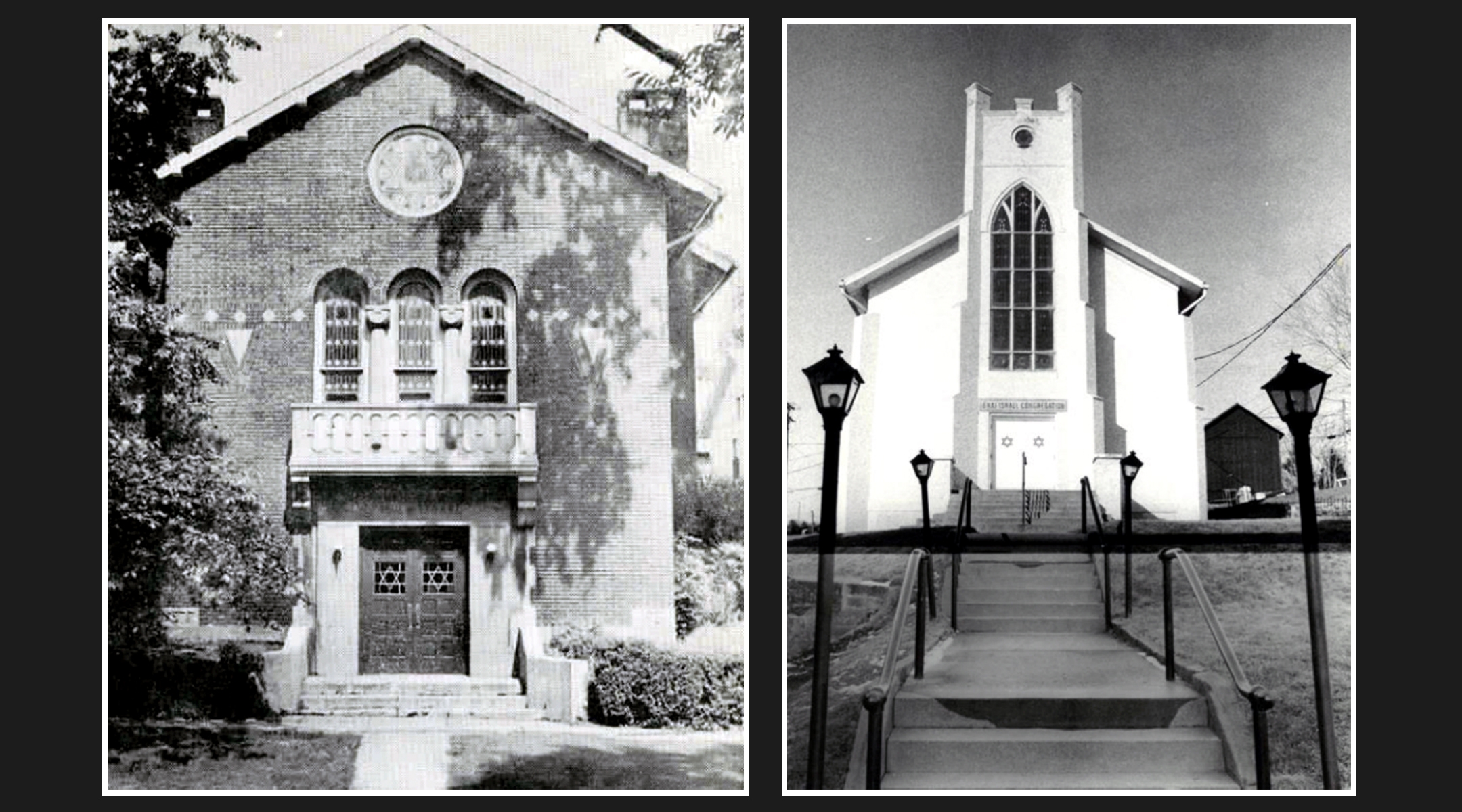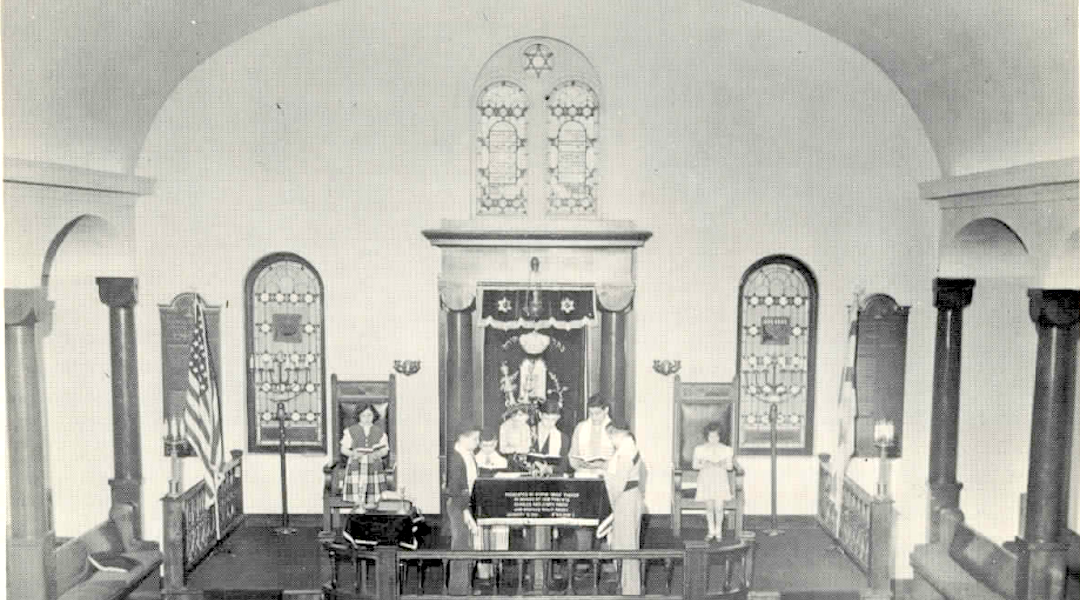Growing up in Lancaster, Ohio, I remember discovering a book in the local library that ultimately helped to change how I viewed my hometown’s history. The book, “Jewish Literacy” by Joseph Telushkin, had a small sticker on the inside cover indicating it was purchased through the B’nai Israel Synagogue of Lancaster Jewish Book Fund. This was surprising, as there hadn’t been an organized Jewish community in Lancaster for years.
I later learned that the fund had been established by the remaining members of the synagogue after its sale in 1993, with the intention of ensuring that the tradition of Jewish education continued in Lancaster, even in the absence of a physical synagogue.
This discovery, along with other signs like a Star of David engraved next to a cross on the town’s war memorial and the presence of the building that once housed the B’nai Israel synagogue downtown, hinted at Lancaster’s former Jewish community. During its nearly seven decades of existence, B’nai Israel not only served its congregants but also hosted groups — including church youth organizations and civic societies — to educate others about Judaism. As in many small towns across the United States, the synagogue provided the only accessible resources for learning about Jewish culture, history and theology.
For the last several years, I’ve dedicated myself to documenting the Jewish histories of small towns in both my home state of Ohio and my adopted state of New York. I am drawn in by the realization that many of these once-active communities, despite their contributions, were in danger of fading into obscurity. As a volunteer, I have spent countless hours piecing together the stories of Jewish families, tracing their lives and legacies in over 20 small towns. In most of these places, the written record of their Jewish past was sparse, with local historical organizations often lacking the resources or staffing to fully explore these stories. These constraints also create opportunities for volunteers and community members to engage in uncovering stories still waiting to be told.
Small-town synagogues often function not just as religious institutions but as unique centers for education and community engagement. In Lancaster, the B’nai Israel synagogue opened its doors to various groups seeking to learn about Judaism. Its book fund ensured that, even after the synagogue’s closure, locals could continue to conveniently access resources devoted to Jewish culture and history.
Eighty miles to the south, in Portsmouth, Ohio, the Jewish community was also engaged in interfaith efforts from its earliest days. When Beneh Abraham, the local synagogue, was consecrated in 1858, Christian residents of the town supported the construction, and the First Presbyterian Church choir even sang during the dedication. Such partnerships went both ways, with Jews contributing to the building funds for nearby churches.
The local rabbi, Judah Wechsler, taught in both English and German. Wechsler’s leadership helped Beneh Abraham function as more than a religious space — it became a center for community engagement in Portsmouth. Portsmouth’s first synagogue, like many other historic religious structures in America, no longer stands today, but this early story from the town’s Jewish community reminds us of how intertwined religious groups in small towns can be. Beneh Abraham continues to exist in Portsmouth and is one of Ohio’s oldest Jewish congregations.

At left is B’nai Israel of Auburn, New York, which was located at 18 Seminary Avenue. The building was demolished in 1974 to make way for a new roadway funded as part of a federal urban renewal project. At right is the former Congregation B’nai Israel of Lancaster, Ohio, around 1990. While the synagogue disbanded in 1993, the building still stands and is now an Airbnb.(Austin Reid; Fairfield County Heritage Association)
In Auburn, New York, the former B’nai Israel Synagogue played a crucial role in bringing neighbors together and fostering understanding. Throughout much of the 20th and early 21st centuries, B’nai Israel welcomed interfaith activities, particularly through its long-standing relationship with St. Luke’s United Church of Christ. This engagement included an annual exchange of pulpits, novel when it began in 1939, where the rabbi of B’nai Israel and the minister at St. Luke’s would preach at each other’s congregations. This effort, undertaken each year during the national Brotherhood Week campaign, continued for over 30 years, helping strengthen ties between Jewish and Christian communities in Auburn.
In both Auburn, New York, and Lancaster, Ohio, the B’nai Israel synagogues’ efforts to educate non-Jewish neighbors about Judaism often left lasting impressions, in keeping with studies showing that the more people know about Jews, the less they embrace antisemitic tropes. With the closure of these small-town synagogues in the late 20th and early 21st centuries, the physical presence of Jewish life in these towns has largely disappeared, raising questions about how this loss impacts interfaith understanding and broader cultural awareness.
As small-town Jewish communities across America continue to contract, preserving their histories becomes not just an act of remembrance, but also an essential part of understanding the broader American story. Though often small in numbers, small-town Jewish communities have played crucial roles in shaping the civic, cultural and economic landscapes of their communities.
As the physical reminders of small-town Jewish life — such as synagogues, social centers and long standing family-owned businesses — fade, there is a danger that their stories will disappear, a loss not only for Jewish history but American history. They remind us that America’s heartland is not as monolithic as it is often portrayed, and that diversity has long been part of the stories of many communities.
In Lancaster and Auburn, the efforts of individuals and institutions to preserve local Jewish histories stand as models of how this work can be done. In its last years, members of Auburn’s former B’nai Israel synagogue donated many of the congregation’s religious artifacts, including the synagogue’s historic stained-glass windows, to the Cayuga Museum of History & Art, ensuring that the congregation’s memory would live on in a public space.
But in most of the communities I’ve studied, there was no such effort until recently. In some towns, synagogues were demolished or fell into disrepair, their histories largely unrecorded. It wasn’t until I began this work as an undergraduate that the stories of these Jewish communities began to be gathered and pieced together, bringing their legacies back into the light.
Preservation alone is not enough. These histories must be shared and integrated into broader conversations about American identity. We not only honor Jewish families who helped to build and sustain so many small-town communities but also ensure that future generations understand the complexity and richness of small-town life in America.
In a time when debates about national identity dominate our public discourse, preserving the histories of small-town Jewish communities offers a crucial reminder: that the American story is, and always has been, one of diversity and change.
JTA has documented Jewish history in real-time for over a century. Keep our journalism strong by joining us in supporting independent, award-winning reporting.







